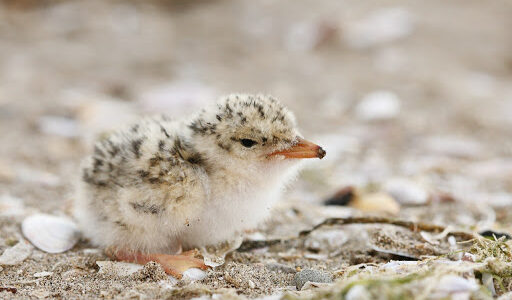
Baby Bird
EMERGENCY SHORT TERM CARE INFO FOR GENERAL PUBLIC
Rehabilitation of wildlife casualties requires a licence and a large investment of time and resources. It is mainly in the animal’s best interest to transfer it to an appropriately trained and equipped individual/organisation as soon as possible.
Before attempting to capture baby bird:
- Observe, assess, discuss, then decide whether intervention is appropriate
- All wild birds can potentially transmit disease and inflict serious injuries
- Remember, your own safety is of paramount importance
NEED RESCUING?
CAPTURE
SHORT TERM CARE BABY BIRD
NEED RESCUING?
ALL TOO OFTEN BABY BIRDS ARE “RESCUED” UNNECESSARILY
*PLEASE read ‘TO “RESCUE” OR NOT – BABY BIRDS’ before reading any further!*
HELP NEEDED
- bird lying on its side and floppy – needs veterinary attention immediately
- dangerous location – e.g. cat nearby
- obvious injuries
- Definitely on its own, and ONLY after reading ‘RESCUE OR NOT – BABY BIRDS’ first
- If unresponsive/unconscious – needs veterinary attention immediately
HELP NOT REQUIRED
- ALL APPARENT ORPHANS, (unless injured, dangerous situation, definitely alone, see above)
- If you are not equipped
- If you or others would be put in too much danger
IT DOES NEED RESCUING, WHAT NEXT?
FIRST try to call relevant contact number from CONTACT page for further advice
WANT TO ATTEMPT CAPTURE
- Follow capture instructions below
- Capture only if you have adequate equipment and container
- Consider personal safety on roads e.g. reflective jackets, warning signs
- Bring to a vet if possible, if not bring home temporarily
- Follow husbandry advice for feeding and housing
- Call relevant contact number from CONTACT page for further advice
DON’T WANT TO ATTEMPT CAPTURE
- lay a light coat over the casualty for warmth
- If bird is on the road, protect it from traffic if possible
- Consider personal safety on roads e.g. reflective jackets, warning signs
- Do not drag the bird off the road, IF safe to do so, lift it to a safe place on a coat/towel
- Note exact location and call relevant person from CONTACT page
- Ideally stay with the casualty until someone comes to help
CAPTURE
Equipment
Blanket/towel, gloves, cat carrier or strong cardboard box, long handled net
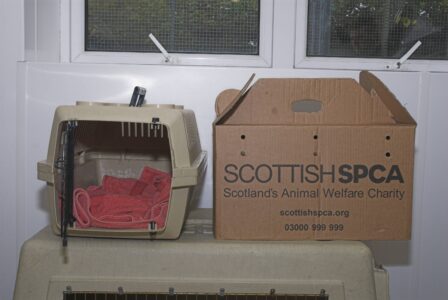 |
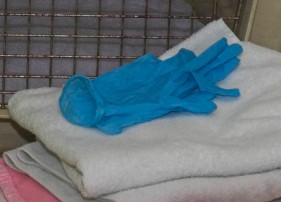 |
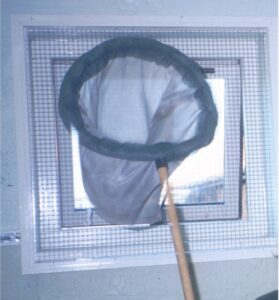 |
| © Colin Seddon | © Colin Seddon | © Becki Lawson |
Baby Bird capture
- If bird is flapping away quickly, use net to GENTLY pin the bird to the ground
- Lay a towel over the bird
- Gloves may be needed for birds of prey that may have sharp talons
- Gently cup your hands around the bird. Do not apply pressure
- Lift bird into transport container
Transportation
Cat carrier or strong cardboard box with secure lid
Wire cages are not ideal – stress and risk of feather damage
Line the container with a clean towel or newspaper
Container needs to be large to hold the bird but small enough to prevent it flapping around
Provide ventilation if using cardboard box, make tiny air holes low down on the sides of the box
Secure container – prevent severely debilitated/unconscious bird making a sudden recovery and escaping
Protect from excessive noise, vibration, extremes of temperature, wind, rain and direct sunlight
Handling
Use gloves/towel
Do not handle unnecessarily
Once captured do not try to calm bird by talking to it
Keep other domestic animals away
SHORT TERM CARE BABY BIRD
See SUPPLIERS page for food and equipment mentioned below
Step by Step:
- Warmth
- Peace and quiet
- Darkness
- Nutrition
| Housing House indoors in a warm quiet area, out of direct sun or drafts Keep away from domestic animals and children Darken the container to reduce stress Line with newspaper with towel or absorbent kitchen towel on top for grip and warmth For bald or partly feathered birds make a nest for them in the box using a plastic dish and line with paper towelling Do not put baby water birds e.g. ducklings, in or on water Suggestions:
|
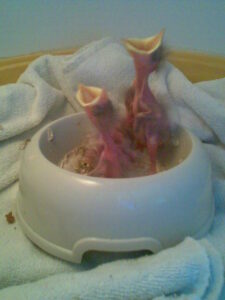 |
| © Chelsea Collins |
Warmth
The bird should feel warm to the touch
The bird needs to be kept warm; part of the container needs to be roughly 25-30˚C
A hot water bottle or a plastic bottle with warm water, wrapped in a towel can be used
Beware overheating can also kill so give enough space that the bird can move away from the heat if necessary
If the bird is cold it will be unwilling to feed
| Toileting A faecal sac is a white jelly-like ‘envelope’ containing the bird’s faeces (not all species produce this) This should be produced after each feed, remove from the ‘nest’ to keep the bedding clean Normal droppings contain brown or dark green faeces and white urates If the droppings are loose and runny, the bird has possibly received too much food |
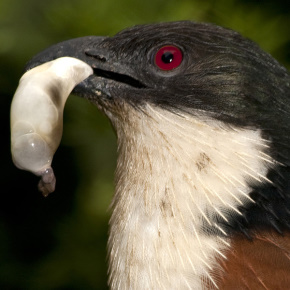 |
| © Kevin McDonald |
FEEDING
A SMALL BIRD WILL DIE IF IT DOESN’T EAT FOR 48 HOURS
In order to feed the correct food, establish if the baby bird is ALTRICIAL or PRECOCIAL
ALTRICIAL
Born with no feathers, eyes closed, entirely dependent on parents for food and warmth
e.g. sparrow, robin, bluetit, or baby birds of prey e.g. owl, kestrel
There are two types of altricial birds; NESTLINGS and FLEDGELINGS
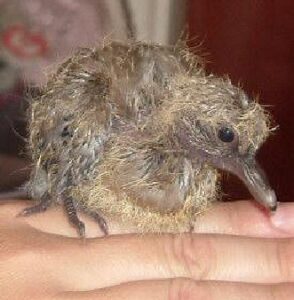 |
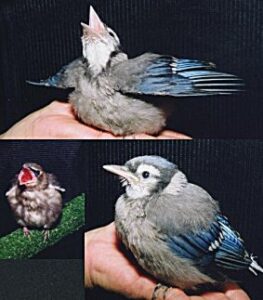 |
| © Cynthia Roberts | © Judy Seiler |
| NESTLING – Collared Dove | FLEDGELINGS |
If the bird is an altricial fledgeling, see ‘Birds’ page for feeding advice
If the bird is an altricial nestling see below for feeding advice
PRECOCIAL
Born with downy feathers, able to stand and follow the adult bird almost immediatly
Precocial birds feed themselves from the moment they hatch
e.g. ducklings, pheasants, moorhens
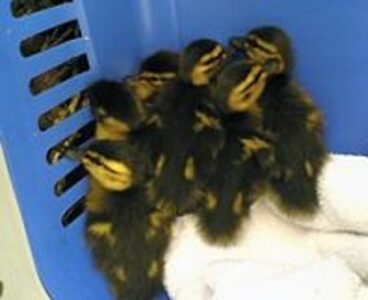 |
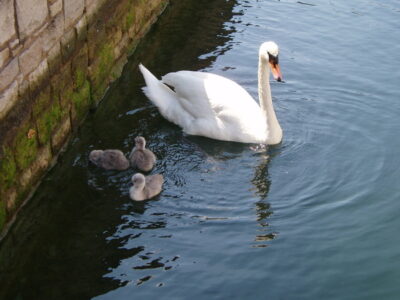 |
| © East Sussex Wildlife Rescue | © East Sussex Wildlife Rescue |
| PRECOCIAL – Ducklings | PRECOCIAL – Swan and cygnets |
FEEDING ALTRICIAL NESTLINGS
Frequency
Nestlings require frequent feedings, every 10 minutes from dawn to dusk (birds sleep at night)
The first feed should not be given until the bird feels warm and looks reasonably alert
Quantity
Feed until the chick stops gaping/begging
Too little is better than too much so stop feeding if the bird seems to have had enough
Technique
Orphans will normally gape for food when hungry
Offer small pieces of the food with plastic tweezers, thin end of a teaspoon or a small paintbrush
Gently clean the chick’s face and bill with a wet paintbrush or tissue after each feed
Remove the faecal sac that the chick produces after each feed
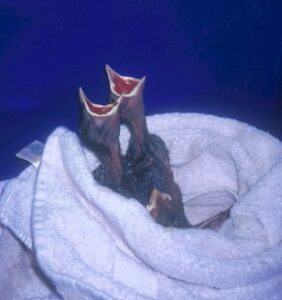 |
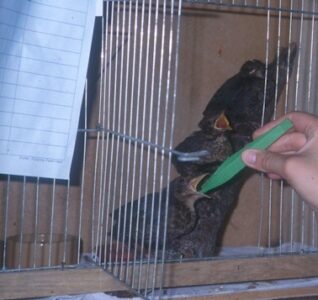 |
| © Becki Lawson | © Becki Lawson |
| Pigeons and doves Unlike other birds, these chicks put their beaks into their parent’s mouth and actively suck up ‘crop milk’. All other chicks simply open their beak to be fed Pigeon chicks undergoing rehabilitation need to be fed directly into their crop. As a short term solution, try opening the beak and using an ear/medicine dropper or syringe to put baby food into the very back of the chick’s mouth Stop feeding if chick becomes very distressed, struggles or starts shaking its head |
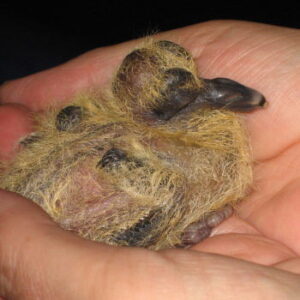 |
| © Cynthia Roberts | |
| Woodpigeon |
Food suggestions:
- Tinned cat or dog food, mashed
- Dry cat food soaked in water until it is completely wet and soft, mashed
- Baby food, semi solid 4oz jars
For feeding young swifts, swallows and house martins see SHORT TERM CARE ADULT BIRD on the adult bird page Do NOT feed the suggested food, above, to these birds.
Water
The food suggested above will provide all the liquid necessary
Baby birds can potentially drown if water is administered incorrectly
FEEDING PRECOCIAL CHICKS
Pheasant
- porridge oats, bread crumbs or garden bird seed or poultry corn
Swan, geese, ducklings
- bread pieces and grass in bowl of water, shredded cabbage or poultry corn
Frequency
Food should not be offered until the chick feels warm and looks reasonably alert
Leave food with these chicks at all times
Replace old looking or untouched food with fresh or alternative food
Quantity
Ensure there is always a small surplus of food in the container with the chick
They feed continuously
Technique
Precocial chicks feed themselves from birth, as soon as they hatch they follow and copy their mother, picking at food around them
Leave food scattered around the chick, both in and out of a bowl
Replace the lining of the container at regular intervals as it will quickly become wet and dirty
Water
Fresh drinking water should be provided at all times
The chick should not be able to bathe in the water so a wide shallow dish of water with an upturned bowl in the centre of it is a good solution
LONGER TERM CARE INFO FOR REHABILITATORS
Rehabilitation of wildlife casualties requires a licence and a large investment of time and resources. It is mainly in the animal’s best interest to transfer it to an appropriately trained and equipped individual/organisation as soon as possible.
Before attempting to capture a wildlife casualty:
- Observe, assess, discuss, then decide whether intervention is appropriate
- All wild birds can potentially transmit disease and inflict serious injuries
- Remember, your own safety is of paramount importance
Read GENERAL PUBLIC section first. Extra information for long term husbandry below
HUSBANDRY BABY BIRD
Hand-rearing should not be undertaken unless:
- The baby bird will be kept as wild as possible
- Suitable accommodation facilities will be provided
- It is understood that it will require a commitment of 1-3 months
- It is understood that rearing and successful release of a baby bird requires considerable expertise and a huge investment of time
Weight
Weigh same time each day
Weight loss or static weight is an early indicator of underlying problems
Housing
- Altricial nestling
Open topped to allow feeding from above
Plastic bowl for a nest, lined with kitchen/paper towel or small piece of material
Ambient temp of 25-30˚C from a heat lamp above
Monitor temperature closely to prevent overheating
When the altricial nestling develops feathers and begins climbing out of the nest, it has become a fledgeling. Move fledgeling into: |
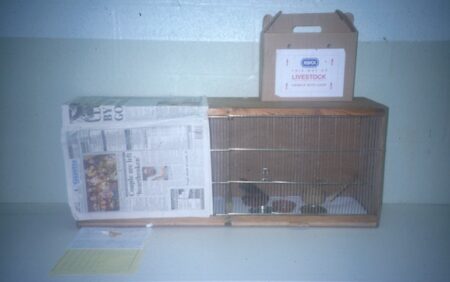 |
| © Becki Lawson |
- Precocial chick
These baby birds don’t need nest bowls
Sand on cage floor
Twig perches if species dictates
Heat lamp at one end of cage for comfort rather than necessity
Ducklings like to huddle under a feather duster
Age
See aging chart for birds.
Birth; naked, eyelids closed
At a week old; few feathers on wings and tail
At 2-3weeks old; fully feathered
4 weeks; flying and self-feeding
 |
 |
| © Margie Hanrahan | © Judy Seiler |
REHYDRATION
Oral rehydration (gavage)
*A TECHNIQUE ONLY TO BE USED BY EXPERIENCED REHABILITATORS*
This is giving fluids directly into the bird’s gizzard
The gizzard lies on the bird’s left side, just below the sternum/breast bone
Method:
- Hold the lubricated, soft rubber, blunt ended tube against the bird and mark on it the estimated distance to the gizzard to aid placement
- Fill the syringe with the required amount of rehydration fluids
- Attach the tube to the syringe, depress plunger until fluid reaches the far end of the tube
- Using two people; one holds the bird with its head erect, the other inserts the tube attached to the syringe, down the bird’s throat
- The tube is passed gently down the oesophagus, NOT DOWN THE TRACHEA
- The oesophagus is the large opening closest to the top beak (see diagram)
- Once in the crop the tube may meet resistance, twist gently towards a point just to the left of the top of the bird’s keel
- The oesophagus meets the proventriculus and then the bird’s gizzard
- Once the tube is in place slowly depress the syringe plunger
- watch that no liquid backs up the bird’s throat
- When the syringe is empty, withdraw the tube whilst still attached to syringe
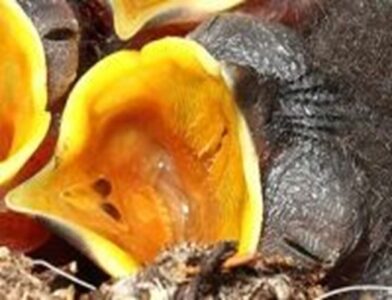 |
 |
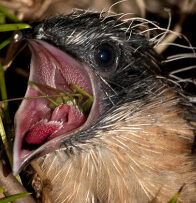 |
| © Doug Smith | © Steve Wright | © Kevin McDonald |
Fluid suggestions:
Always use warmed fluids |
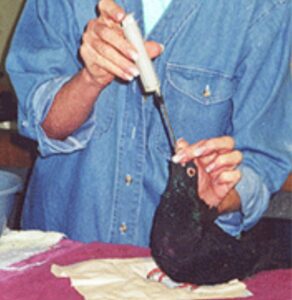 |
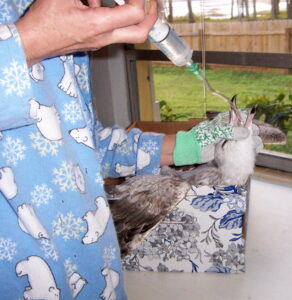 |
| © Devorah Feldman | © Linda Sweeney | |
FEEDING
Food
Food needed for hand rearing various bird species:
See SUPPLIERS page for details of suppliers
- Insectivorous food e.g. Tropican rearing mix, Orlux Nutribird, Exact Hand Feeding Baby Bird
- Chick crumbs
- Game bird starter diet
- Tinned cat and dog food
- Dried and live insects e.g. waxworms, mealworms, maggots, crickets
- Vitamin and mineral supplements e.g. SA37, Vionate, Nutrobal
- Thiamine supplement e.g. Aquavit or Fish Eaters’ Tablet
- Probiotic e.g. Avipro Paediatric
- Canary rearing mix
- Millet
ALTRICIAL CHICKS
Frequency – Altricials
Altricial chicks require frequent feedings, a rough guide is:
| Age / Developmental stage | Feeding frequency between dawn and dusk |
| Birth; naked, eyelids closed | every 10 minutes |
| 1 week; few feathers on wings and tail | every 30 minutes |
| 2-3 weeks; fully feathered | every 2-3 hours |
| 4 weeks; flying | self-feeding |
Quantity- Altricials
The crop should be empty before each feed (N.B. owls do not have a crop)
Feed until crop is full (not stuffed) or begging/ gaping stops; too little is better than too much
Gradually increase amount per feed, at a rate appropriate to the individual chick
When the bird has eaten enough it will collapse and sleep until it is hungry again
Most species eat 10-20% of their body weight per day; initially much less, gradually increase
The first feed should not be given until the bird feels warm and looks reasonably alert
Species specific food
The sooner you identify the bird, the sooner you can provide the best diet
Use links page for bird identification website if unsure of the species. Inappropriate food could kill
In general birds’ diets can be split into four groups and the diet can be guessed at by the shape of the beak:
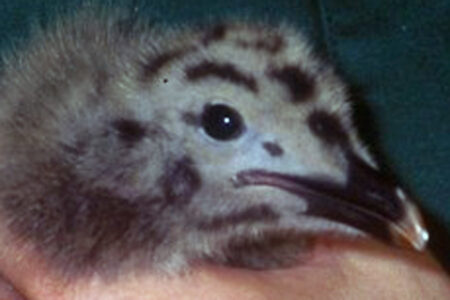 |
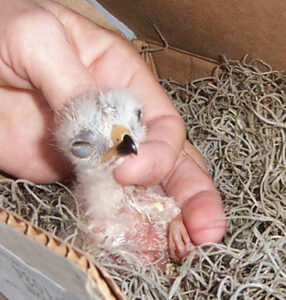 |
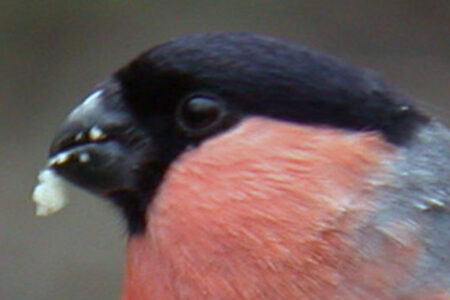 |
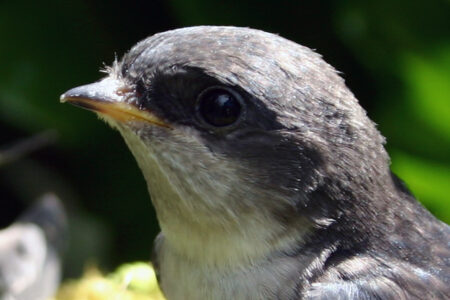 |
| © Becki Lawson | © Linda Sweeney | © Andrew Kelly | © Chelsea Collins |
| Omnivore | Carnivore | frugivore/granivore | Insectivore |
Here is a list of the different species you may encounter and what to feed them:
Thrushes, cuckoos, starlings and nuthatches, tits, wagtails, fly-catchers, warblers
– finely chopped maggots, mini mealworms or waxworms / insectivorous food, mixed with finely mashed cat food
small pinch of powdered vitamin/mineral supplement per day
NB tits need handfeeding longer than other garden birds, continue until they’re no longer interested
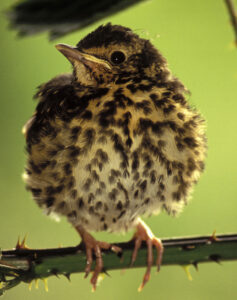 |
 |
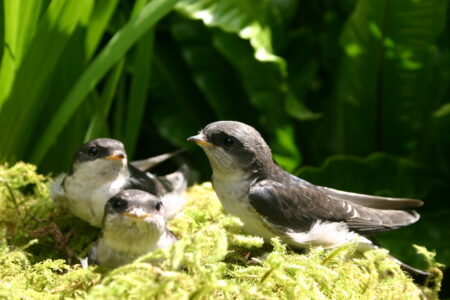 |
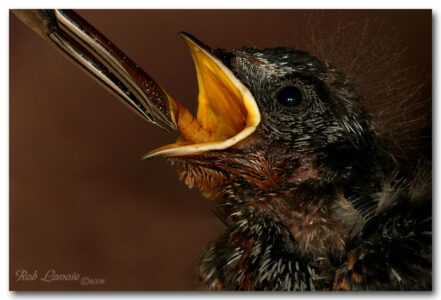 |
| © David Watts | © David Packman | © Chelsea Collins | © Robert Lavoie |
| Song Thrush | Blue Tit | House Martin | Swallow |
Swifts, swallows and house martins
– for feeding young swifts, swallows and house martins see SHORT TERM CARE ADULT BIRD on the adult bird page
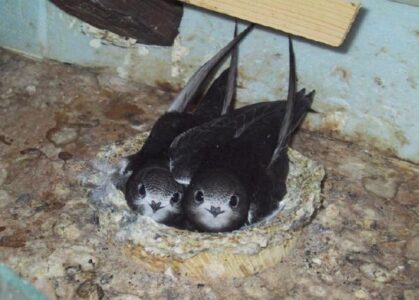 |
 |
| © Erich Kaiser courtesy of www.swift-conservation.org | © Muhammad Mahdi Karim,www.micro2macro.net |
| Swifts | Sparrow |
Sparrows, finches, buntings
– finely chopped maggots or waxworms/ insectivorous bird food, mixed with finely mashed cat food and canary rearing mix
small pinch of powdered vitamin/mineral supplement per day
Corvids (crows, rooks, jackdaws, etc)
– finely chopped chicks, mealworms, and tinned cat food, mixed with insectivorous food and grain
 |
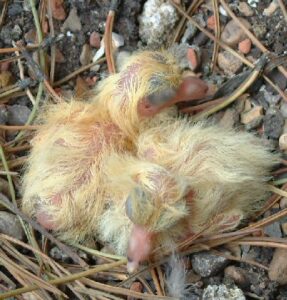 |
 |
 |
| © Ann McCluskey | © Cynthia Roberts | © Cynthia Roberts | © Cynthia Roberts |
| Jackdaw | Feral Pigeon | Wood Pigeon | Collared Dove |
Collared and turtle doves, pigeons and larger doves
– hand feeding: mix of chick crumbs, insectivorous food, millet and water
– crop feeding: insectivorous food
(In the wild these columbids feed their young on a type of milk produced in their crop until weaning)
small pinch of powdered vitamin/mineral supplement per day
NB these chicks will NOT gape; beak must be opened by hand
Initially feed every 45 mins, check crop is empty before feeding
Kingfishers
– small fresh dead fish e.g. whitebait, minnows or guppies
thiamine supplement
 |
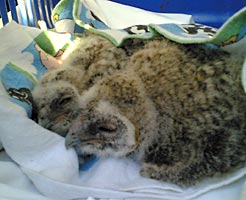 |
 |
| © Martin Perscatore Wikimedia | © East Sussex Wildlife Rescue | © Andrew Kelly |
| Kingfisher | Long Eared Owl chicks? | Barn Owls |
Birds of prey
– whole animal diet from birth; meat, bone, fur and/or feathers, e.g. finely chopped day old chicks or dark coloured mice
small pinch of powdered vitamin/mineral supplement and probiotic per day
The crop should be empty before each feed (N.B. owls do not have a crop)
Heron
– small fresh dead fish e.g. whitebait, sprat, pieces of herring, or chopped chicks/mice
thiamine supplement
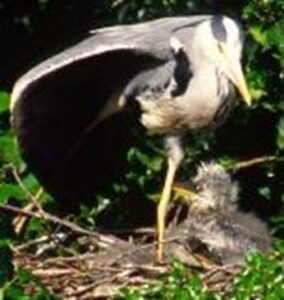 |
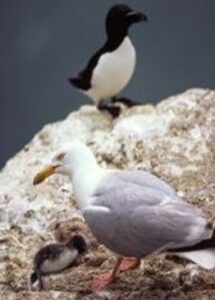 |
 |
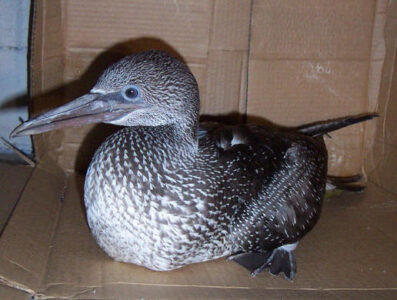 |
| © Andrew Kelly | © Andrew Kelly | © Andrew Kelly | © Linda Sweeney |
| Herons | Razorbills | Shags | Gannet |
Seabirds e.g. guillemot, razorbill, fulmar, gannet, cormorant, shag
–small fresh dead fish e.g. whitebait, sprat, pieces of herring
supplement with thiamine and salt for some seabirds- non essential for brackish/fresh water birds e.g. cormorants and gulls
Seabirds – Gulls
– small fresh dead fish e.g. whitebait, sprat, pieces of herring, whitebait, or fish flavoured cat food, or chopped day old dead chicks
N.B. gulls learn to self feed very quickly
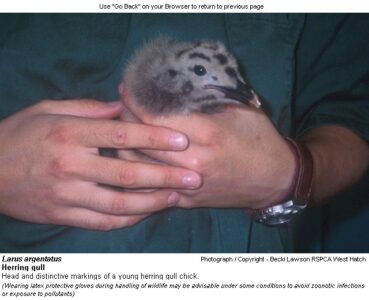 |
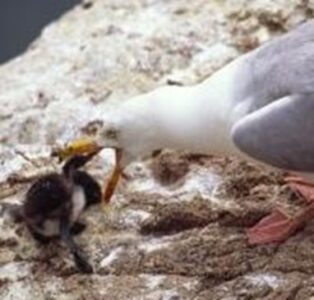 |
| © Becki Lawson | © Andrew Kelly |
| Herring Gull chick | Gull eating razorbill chick |
PRECOCIAL CHICKS
Frequency and Quantity – Precocials
Provide food ad libitum and always have a small bowl/chicken drinker with fresh water available
Self feeders, but may need to be encouraged initially e.g.
Live insects in bowl of chick crumbs to encourage the chick to start feeding on the crumbs not just the live food
Sprinkling a few crumbs on the backs of the chicks, where they will groom it off
Sprinkling the food all around the chicks not just in the bowl
GRIT: all seed and corn feeders will need suitable-sized mixed grit available from an early age to aid digestion
The first feed should not be given until the bird feels warm and looks reasonably alert
Species specific food
The sooner you identify the bird, the sooner you can provide the best diet
Use links page for bird identification website if unsure of the species. Inappropriate food could kill
Pheasants, partridges
– chick crumbs or game bird starter diet, wholemeal bread crumbs, insectivorous food, chopped dandelion, dark green lettuce, and live food e.g. mini-mealworms and waxworms for the smaller species. Budgie seed/millet may be added for older chicks
Cygnets, goslings, ducklings
– chick crumbs soaked in water in a small shallow bowl
 |
 |
 |
 |
| © Tony Northrup | © Tony Northrup | © Becki Lawson | © Andrew Kelly |
| Cygnets | Pheasants | Coot | Grebes |
Moorhens , coots
– chopped maggots and mealworms, tiny pieces of whitebait, insectivorous food in a bowl with a few live maggots/mealworms
Grebes
– whitebait, sprat or herring pieces in shallow bowl of water
thiamine supplement
Techniques:
Crop feeding technique for nestlings
Altricial nestlings can initially be ‘crop fed’ liquid nutrition e.g. various insectivorous diets
Follow instructions as for oral rehydration above, BUT the tube is only passed down the oesophagus as far as the crop
They should gape and call to be fed
Feeding should be able to be performed without removing the bird from nest bowl
When older, feathered, eyes are open, and they are pecking at feeding tube, change to more substantial food, see species specific food
Hand-feeding nestlings/fledgelings
Baby birds will normally gape and call for food when hungry
Offer small pieces of food using plastic tweezers, small pliers, a small paintbrush or a medicine dropper initially if the food is liquid enough
If the bird doesn’t gape, gently pry open the beak with your fingers, the bird should soon recognise you as food and gape willingly
Clean the chick’s face and bill with a wet paintbrush or tissue after each feed
Using tweezers, remove the faecal sac that the chick produces after each feed
Feeding precocial birds
These birds are self-feeders from hatching
Offer appropriate sized, species specific food as soon as they are bright and alert
Self-feeding
The altricial bird will eventually learn to feed on its own
Encouragement suggestions below:
- Fruit and seed eaters – place a soft piece of fruit (apple or banana) with small seeds in it, in front of the bird and gently press the bird’s beak into the fruit. Bits of fruit will stick to the beak and the bird will eat them
- Insect eaters – give mealworms or maggots (dead or alive) in a bowl and scattered on floor, their wiggling will often entice the bird to pick them up
Altricial baby birds should be self- feeding at roughly 3 – 4 weeks of age
Self-feeding is a matter of maturity, the instinctive behaviour won’t begin until the bird is old enough
Once the bird is self feeding, see Adult Bird page for species specific adult food
Feeding notes
Keep food refrigerated when not in use
Warm up fluids before feeding
Solid food does not need to be heated up, warming encourages bacteria
Make a new batch of food daily
WATER
- Altricials
Only provide drinking water in a bowl when they are eating solid food unassisted
Drop a little water on its beak or into its mouth until it catches on or teach it to drink by gently dipping its beak into water, then releasing it immediately
- Precocials
Fresh drinking water should be provided at all times
The chick should not be able to bathe in the water so a ‘chicken drinker’ or wide shallow dish of water with an upturned bowl in the centre, should be used
FLYING
You don’t have to teach a bird to fly, when it is old enough it will fly instinctively
Young birds may begin to fly a week or two before they can feed themselves
Once the bird is feeding itself on its natural diet, move it to an outside aviary to give it room to practice flying and strengthen its flight muscles
| N.B. – SWIFTS and SWALLOWS fly continuously from birth and only land for the first time to nest When a swift gets to optimum release suitability it will need to be launched gently into the air House martins will take off from your hand |
 |
| © Erich Kaiser courtesy of www.swift-conservation.org.jp |
RELEASE
See species specific sections in Adult birds for details
As a basic guide;
After a week in the outdoor aviary, leave the door open during the day and close it at night for protection
It may take several weeks for the bird to adjust to the outdoors and stop returning to the cage for food
Give the bird time and continue to provide food
TO “RESCUE” OR NOT – BABY BIRD
As a general guide DO NOT ‘rescue’ the bird unless it is obviously injured,
in a dangerous location, or definitely alone
Before attempting to capture a wildlife casualty:
- Observe, assess, discuss, then decide whether intervention is appropriate
- All wild birds can potentially transmit disease and inflict serious injuries
- Remember, your own safety is of paramount importance
IF YOU STILL THINK THE BIRD NEEDS RESCUING, PLEASE READ THE SECTION BELOW FIRST
PRECOCIAL OR ALTRICIAL
BIRDS OF PREY
BIRD MISCONCEPTIONS
PRECOCIAL OR ALTRICIAL
ESTABLISH WHETHER THE BIRD IS PRECOCIAL OR ALTRICIAL
|
PRECOCIAL – Precocial chicks are covered with fine downy feathers and can run and feed themselves three days after hatching, e.g. ducklings, pheasants, moorhens. They will mainly stay close to their parents and the nest for some time |
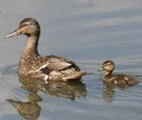 |
| © Tony Northrup |
- When to rescue precocial chicks
If not weak or injured, the chick may simply need to be re-united with the parents and siblings.
They are usually not far away and recognize the parent’s call.
Precocial chicks will become weak and dehydrated quickly from constant calling for their parents and should be re-united ASAP.
- If you can’t find the parents then rescue may be necessary
- Call relevant contact number from CONTACT page for further advice
- Then read baby bird section
ALTRICIAL – born with no feathers, eyes closed, entirely dependent on parents for food and warmth e.g. small garden birds like sparrows, tits, or large raptors e.g. owls, kestrels
There are two types of altricial birds; NESTLINGS and FLEDGELINGS
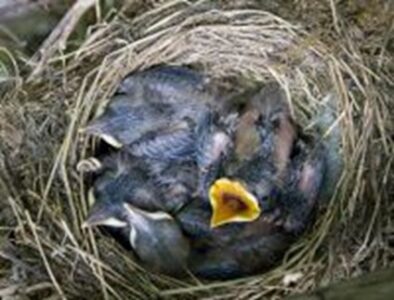 |
 |
| © Andrew Kelly | © Andrew Kelly |
| NESTLINGS | Adult feeding FLEDGELING |
NESTLING
Nestlings are very immature. They either do not have feathers or their feathers are just starting to grow. Ordinarily, these baby birds would be in a nest and the parents would come to feed them every few hours
- When to rescue a nestling
A nestling probably needs help if you find one, BUT this does not necessarily mean taking it into care
Nestlings are usually found on the ground, directly below their nest
Nestlings fall or are blown out of their nests, or are pushed out by siblings
This last behaviour is normal for some species as only the strongest of the brood survive
If you find a nestling that seems bright, alert and is opening its mouth for food, place it back in its nest
Similarly, if you find a nest on the ground, put it back into the nearest tree
Most birds have a very poor sense of smell and will not be rejected after handling
To pick up the bird, gently cup your hands around it. Do not apply pressure
You may have to make a new “nest” if you cannot find the original.
To do this, poke some holes in the bottom of a plastic container e.g. margarine tubs, and line it with dry grass/ tissue
Hang the new “nest”, with bird in it, from a tree
Watch the nest from a distance, keeping out of sight as the parent will not return if you are nearby
- If an adult bird does not return after about three hours then rescue will be necessary
- Call relevant contact number from CONTACT page for further advice
- Collect the bird and keep it in a warm, quiet and dark place
- Then read baby bird section
- If a swift is found on the ground it has to be rescued as it cannot take off from the ground on its own
FLEDGLING
Fledglings are young, feathered birds that are learning to fly and be independent. Their parents are likely to be close even if you can’t see them
- When to rescue a fledgling
If you find a fledgling hopping around, leave it alone unless it is obviously injured or being attacked by other birds or animals
It is common for people to see these young birds on the ground and assume that they have fallen out of the nest. This is not always the case
Fledglings often land on the ground while learning how to fly. During this time the mother will continue feeding the bird for a couple of days
Keep cats, dogs and children away from the fledgling so that the mother can continue to feed it undisturbed
If the bird is in danger you could put the bird in a nearby bush or on a tree branch and observe it from a distance, keeping out of sight, for a few hours to see if the parent bird is feeding it
The mother is unlikely to return to her baby if you are in the garden
- If the bird is still in the same place after 24hrs then rescue may be necessary
- If a swift is found on the ground it has to be rescued as it cannot take off from the ground on its own
- BUT FIRST try scattering species appropriate bird food around the bird and observe from a distance (see ADULT BIRD section for suggestions)
- This is the time the bird will naturally be abandoned by the mother to fend for itself
- When it realises the mother is not coming back it should start to look for food itself
BIRDS OF PREY
e.g. kestrels, owls, these are a special case
The procedure below applies to the chick if it is either a fledgling or a nestling
- When to rescue a bird of prey
It is too dangerous for a bird of prey to come down to the ground to feed their chick so a baby bird of prey needs to be returned immediately to its nest if the nest can be found
|
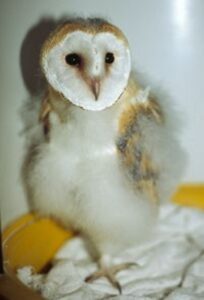 |
| © Andrew Kelly |
BIRD MISCONCEPTIONS
There are many common misconceptions regarding birds
These are TRUE statements explained;
All birds do not eat worms
Worms form only part of insect eating birds diets. The bird mainly kills the worm before eating it, and worms have a high parasite burden. Birds in rehabilitation should not be reared on worms.
Baby birds that have been touched by humans will NOT BE abandoned by their parents
In general, birds have a very poor sense of smell and will return to their young even after having been handled.
Birds imprinted on humans CAN be released but will need special care initially
A bird that has imprinted on people is at a definite disadvantage for the first few weeks of freedom. Any that outlast these weeks have as good a chance as any other. You still have to supplement the diet of a released bird at regular intervals through the day, they will learn to forage and will imprint on their own kind in time.
